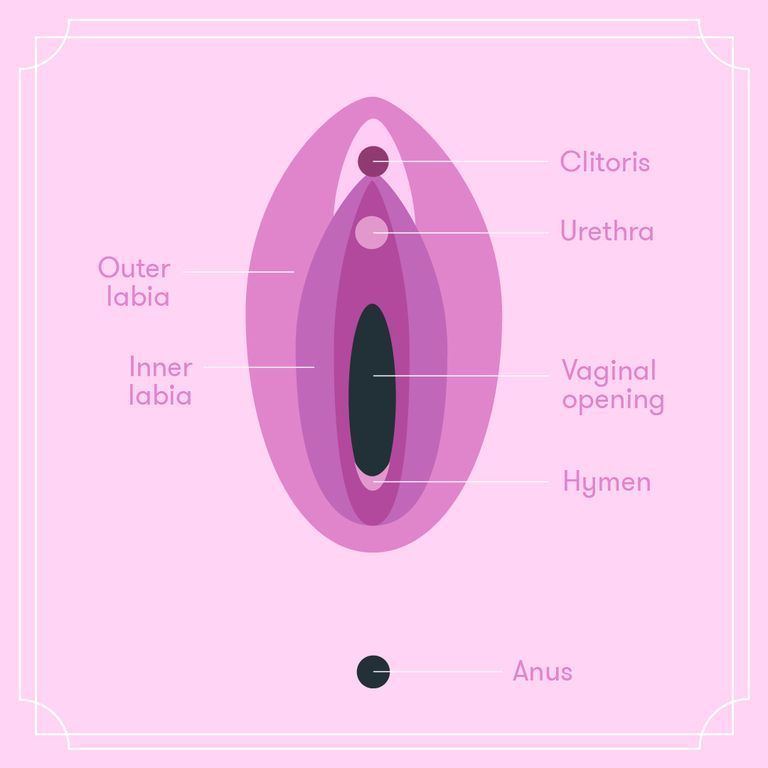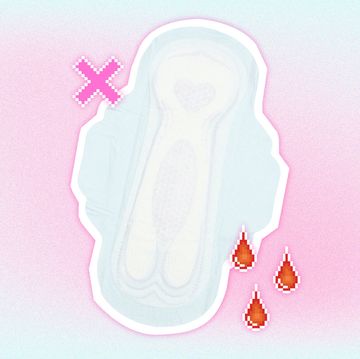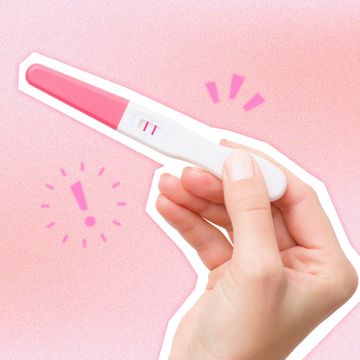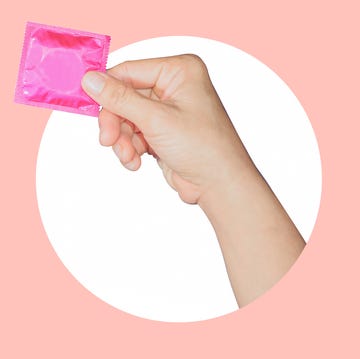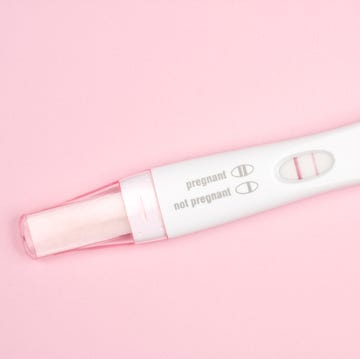Hymens are a fairly mysterious part of the vagina, so it’s totally normal if you have some questions surrounding this small piece of anatomy. Where exactly is the hymen located? What is its biological function? And does it actually tear during sex?
You probably have heard of the phrase, “popping your cherry,” which alludes to the idea that a person bleeds the first time they have vaginal sex because their hymen “breaks.” But your hymen is not a sign of virginity, and unlearning this piece of misinformation is a very important step in becoming more familiar with your anatomy.
Below, Dr. Hina Talib, a board-certified pediatrician and adolescent medicine specialist based in New York City, and Dr. Tristan Bickman, an OB/GYN based in Santa Monica, address everything you need to know about the hymen.
What is a hymen?
“A hymen is very thin, stretchy membranous tissue” located at the opening of your vagina, Dr. Talib explains. It’s a layer of tissue that develops while vaginas form inside the womb. “It’s a totally normal and expected part of the body,” she adds. However, the exact biological function of the hymen is not entirely known.
“There are some theories that hymens help protect your body against infections when you’re younger, but nobody really knows,” Dr. Talib says.
How is a hymen shaped?
Dr. Talib explains that hymens come in a number of different shapes, sizes, and degrees of thickness and stretchiness. “Classically, a ring shape or a donut shape — which we call annular — is probably the most common, along with the crescent shape,” she explains.
But there are three less common hymen shapes to be aware of: imperforate, microperforate, and septate. These hymen shapes can cause discomfort when you receive your first period, when you try to insert or remove a tampon, or when you have sex. You cannot control your hymen shape — as mentioned above, your hymen forms while you’re in the uterus. But the shape can be altered to eliminate these issues with a simple, straightforward procedure in your gynecologist’s office or in a hospital.
Imperforate Hymen
Imperforate hymens occur in about 1 in 1,000 people with vaginas, Dr. Talib says. This is when the membranous tissue completely covers the whole opening of your vagina. When this occurs, blood is unable to flow out of the vagina, causing a back-up of blood and pain in the abdominal region and/or back. You might not know that you have an imperforate hymen until you hit puberty and have your first period.
“Usually, two to three years after the start of breast development is when we’d expect a period to start. If it doesn’t start by then, and you’re having abdominal pain, it’s a good idea to get checked out [because] there could be a barrier blocking blood flow,” Dr. Talib says.
Microperforate Hymen
A microperforate hymen is when there is an opening in the membrane, but it’s very small. So, blood can flow out, but often a tampon cannot be inserted, or if it is inserted, it cannot be removed once it has filled up with blood.
Septate Hymen
A septate hymen occurs when there is an extra band of tissue in the middle of the vaginal opening, causing two small holes, instead of one (it kind of looks like a nostril). Like a microperforate hymen, a septate hymen might cause difficulty in inserting or removing a tampon.
It’s worth noting that it’s really difficult to see your own hymen and determine its shape, Dr. Talib explains. “That being said, it’s always a good idea to understand your own anatomy.” So you could check out your vagina with a small hand mirror, or ask your doctor or gynecologist the next time you have an exam. “It’s about a centimeter or two inside from the opening of the vagina, so it’s a little hard to see,” Dr. Talib adds.
Will my hymen change shape?
In babies, hymens are typically thicker and more annular-shaped, Dr. Talib explains. But as you get older, they tend to form into the crescent shape.
“When you go through puberty and start menstruating, the estrogen that is made by your ovaries may change the appearance of [your hymen] and also cause it to become very elastic,” Dr. Bickman says. Because of this, your hymen will become more susceptible to stretching and look more opaque.
Once your hymen has been stretched out, it won’t grow back, but that’s totally normal and okay. There’s also no way of really knowing that your hymen has stretched.
“It’s not something that you’d necessarily be able to feel with your own fingers, or that somebody who is examining you for the first time would be able to comment on,” Dr. Talib explains. “Between exams, it would be very hard to be able to tell if a hymen has been stretched.”
Is the hymen a sign of virginity?
No. Hymens are not a good way to determine virginity. “It’s a false equivalency,” Dr. Talib says. “There’s no way to tell by looking at a hymen that someone has been sexually active for the first time.” Plus, the definition of sex and losing your virginity varies among individuals. “Being sexually active could mean penetrative sex with a vagina, but it could also mean oral sex, anal sex," she adds.
So, how do hymens break?
Your hymen can tear from a number of different activities, sexual and non-sexual. You may have heard the term “popping your cherry” thrown around the school cafeteria or at a sleepover. “The term captures the idea that the hymen can tear when you’re having sex for the first time,” Dr. Talib says. But that doesn’t necessarily mean you’ll bleed the first time you have sex or get fingered. “Many people don’t notice bleeding at all the first time [they have sex],” Dr. Talib says. In fact, only 40 percent of young people will notice bleeding the first time, she explains. Still, it’s important to note that, yes, bleeding and/or spotting a day or two after having sex can happen, and is completely normal. Since all hymens are different, some may stretch, causing discomfort and bleeding the first time having sex, while some may not.
And sex isn’t the only way you can tear or stretch your hymen. “The reality is that hymens can tear and change shapes from numerous activities, including horse-riding, gymnastics, vigorous physical exercise, or stretching,” Dr. Talib says. Your hymen can also change shape from inserting tampons, and as mentioned above, you might tear your hymen without even knowing.
OK, but then why did it hurt when I had vaginal sex for the first time?
If you have a smaller vaginal opening because your hymen is larger, then it may cause more discomfort, and there may be some blood the first time you’re vaginally penetrated. But bleeding can occur with any hymen shape, Dr. Talib says.
If you’re worried about pain or discomfort during sex for the first time, or if you’ve had sex a few times and still experience some pain, you can slowly stretch out your hymen overtime with your fingers, according to Planned Parenthood. Masturbation is a great way to explore your body and learn what you like and don’t like sexually. It gives you the opportunity to feel more in tune with your sexuality, and can help you feel more relaxed and comfortable with a partner, which is key to having enjoyable and pleasurable sex, Dr. Talib says. But you should also make sure that you’re sufficiently lubricated when having sex, she adds. Try to use a lubricant or a lubricated condom to lessen any irritation or discomfort.
Carolyn Twersky is an associate editor for Seventeen covering celebrities, entertainment, politics, trends, and health. On her off time, she's probably watching Ru Paul's Drag Race, traversing NYC for the best donuts, or, most likely, enjoying time in her favorite place in the world: her bed.
Leah Campano is an Associate Editor at Seventeen, where she covers pop culture, entertainment news, health, and politics. On the weekends, you can probably find her watching marathons of vintage Real Housewives episodes or searching for New York City’s best almond croissants.

